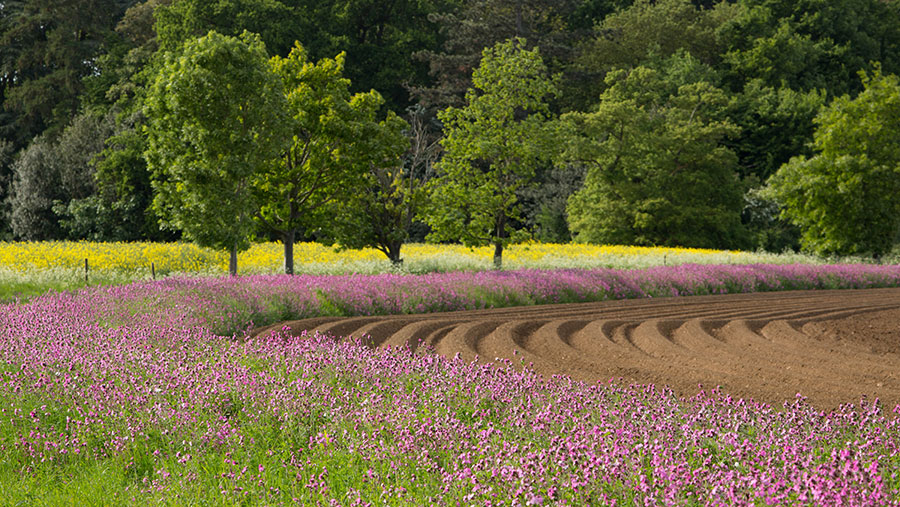Defra report outlines ELM payment rates findings
 © Tim Scrivener
© Tim Scrivener Payments rates to farmers for Environmental Land Management (ELM) must be higher than Countryside Stewardship for the scheme to be a success, suggests a Defra report.
Farmers testing the forthcoming ELM scheme have told Defra they feel inadequately compensated for work done under Countryside Stewardship.
See also: Defra unveils roadmap to ELM scheme
They say payment rates must be much higher for ELM – otherwise farmers simply won’t want to join when the flagship scheme launches in 2024.
Payment rates suggested by farmers are contained in the latest ELM Tests and Trials evidence report, which was published by Defra on Friday 15 January.
On average, rates suggested by farmers for ELM are about 50% higher than those currently paid under Countryside Stewardship.
‘Insufficient compensation’
“Many participant farmers have continually stated that they have not been compensated sufficiently under previous schemes for the activity they have undertaken,” says the report.
This is particularly the case where capital costs are incurred, it adds.
Several groups of farmers are working with Defra to assign preferred payment rates.
Option |
ELM (suggested rate) |
Countryside Stewardship rate |
| Sow a quick-establishing, single-species cover crop after harvest (winter cover crop) | £150-£220/ha | £114/ha |
| Sow a quick-establishing, mixed multiple-species cover crop after harvest (winter cover crop) | £200-£200/ha | |
| Plant in-field grass strip in arable field (any shape); no inputs; can be grazed | £735-£1,000/ha | £557/ha |
| Establish a zero-input grass buffer adjacent to a ditch/watercourse (12-24m) | £500-£700/ha | £512/ha |
| Zero application rates in waterside fields | £250/ha | £131/ha |
| Sow multi-species diverse grass leys; to include mix of five grasses and five forbs, including legumes and some deep-rooted species | £500-£600/ha | £309/ha |
| Plant standard tree in hedgerow |
£10-£14.75/ha |
£8.80/ha |
| Plant single trees in field (for shade, protection) | £100-£250/tree | £8.80/tree |
| Arable wildflower margin /wildflower meadow. Nectar flower /pollinator/wildflower field margins or as a whole-field break crop in rotation. (for example, zero fertiliser or pesticide inputs; annual cutting, dung permitted) | £550-£700/ha |
£539/ha; £511/ha; £550/ha |
| Arable winter bird seed mix field margin (4-6m) or as a whole-field break crop rotation | £840/ha | £640/ha |
| Source: Defra Environmental Land Management Tests and Trials Evidence Report (September 2020) | ||
The suggested rates are from farmers who reviewed management actions to improve soil and water, plant trees and encourage biodiversity.
They were suggested by farmers in the Respryn Bridge Natural Capital test, co-ordinated by Lanhydrock Estate, Cornwall.
Green payments provide more stable incomes than direct support, study finds
Paying farmers for protecting the environment leads to more stable incomes compared with existing basic payments based on the area of land farmed, according to a new study.
The research – which examined a number of environmental practices – was conducted by Rothamsted Research, the University of Reading and Newcastle University.
Lead author and PhD student Caroline Harkness said: “Farmers are facing increasing pressures due to changes in climate, government policy and prices.
“Instability in farm income can be a real challenge. It was interesting – and encouraging – to find that farms adopting environmentally friendly practices also had more stable incomes.
“Farmers may be benefiting financially from their environmental management, while, in contrast, an increase in direct payments per hectare was associated with less stable farm income.”
Environmentally friendly farming practices included engaging in agri-environment schemes, diversifying outputs and reducing the use of chemical inputs.
The researchers examined Farm Business Survey data from 2,333 farms across a range of enterprises in England and Wales between 2007 and 2015.
They found that an increase in direct subsidies paid to farmers based on the area farmed was associated with less-stable farm income, across most farm types.
In contrast, dairy, general cropping and mixed farms that received more agri-environmental payments had more stable incomes in the short and medium term.
But farms in designated Less-Favoured Areas – predominantly upland farms that graze sheep or cattle – do not see the same stability benefits from agri-environmental payments.
Ms Harkness said: “Many of the options in agri-environment schemes may not be available or well suited to deliver ecosystem service benefits in these landscapes.”
Farmers Weekly has asked Defra to comment on the suggested payment rates in the ELM progress report and will add a response to this article when we receive it.
